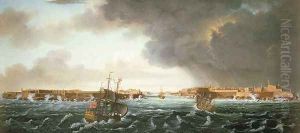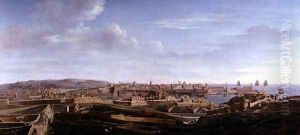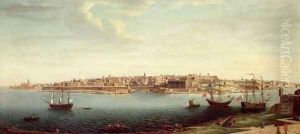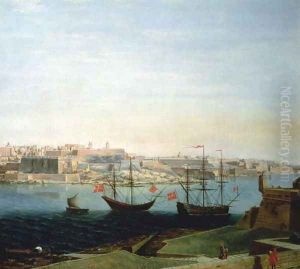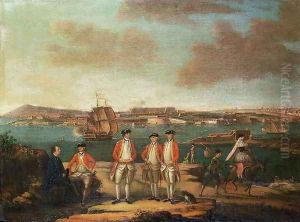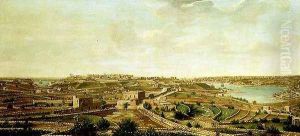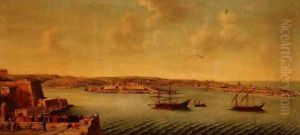Alberto Pulicino Paintings
Alberto Pulicino was an Italian painter and engraver, born in 1749 in Messina, Sicily. He is best remembered for his contributions to the late Baroque and early Neoclassical periods, showcasing his versatility across various art forms, including religious and historical subjects. Pulicino's artistic journey began under the guidance of his father, Domenico Pulicino, also a painter, from whom he learned the basics of painting and drawing. His early exposure to art within his family set the foundation for his future career.
Pulicino's talent and skill soon took him beyond the confines of Sicily. He moved to Naples, which was a vibrant artistic center during the 18th century, attracting artists from all over Italy and beyond. In Naples, Pulicino furthered his studies and refined his technique, becoming part of the bustling Neapolitan art scene. It was here that he was influenced by the works of prominent artists such as Luca Giordano and Francesco Solimena, adopting a style that blended the dynamism of Baroque art with the emerging clarity and simplicity of Neoclassicism.
Throughout his career, Pulicino received commissions from various religious institutions and private patrons, producing altarpieces, frescoes, and paintings that were praised for their vivid detail and emotional depth. Besides painting, he was also a skilled engraver, creating works that captured the Neapolitan landscape and daily life, contributing to the documentation of the era's cultural and social milieu.
Despite his achievements, Alberto Pulicino's work is less known outside of Italy, overshadowed by his contemporaries. However, his contributions to the Italian art scene of the 18th century remain significant, reflecting the transitional period between Baroque and Neoclassicism with sensitivity and skill. Pulicino died in 1827, leaving behind a legacy of art that continues to be studied and appreciated for its historical and aesthetic value.
